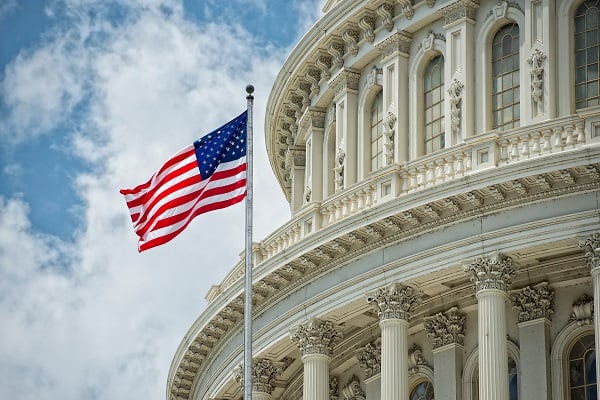Department of Energy Blocks Shutdown of Coal-Fired Power Plant and Oil- and Gas-Fired Generator Units With Federal Emergency Orders
On May 23, 2025 and May 30, 2025, the Department of Energy (DOE) issued two emergency orders under its Federal Power Act (FPA) Section 202(c) authority effectively delaying the closure of two power plants. DOE Order No. 202-25-3 (hereinafter, the Campbell Order) requires the Midcontinent Independent System Operator (MISO) and Consumers Energy to “take all measures necessary” to ensure that the 1,560 MW coal-fired J.H. Campbell Power Plant (Campbell Plant) in West Olive, Michigan — originally slated for retirement on May 31, 2025 — is “available to operate” until the expiration of the order on August 21, 2025. DOE Order No. 202-25-4 (hereinafter, the Eddystone Order) similarly requires PJM Interconnection (PJM) and Constellation Energy to keep 760 MW of oil- and gas-fired peaking capacity — also set to retire on May 31, 2025 — at the Eddystone Generation Station (Eddystone Station) in Pennsylvania available until August 28, 2025. There is also the potential of extensions of these expiration dates.

NHTSA Announces New Policies to Promote Autonomous Vehicles
On April 24, 2025, the Department of Transportation announced the new Automated Vehicle (AV) Framework from the National Highway Traffic Safety Administration (NHTSA). The announcement, which was accompanied by a video from the Secretary of Transportation, included two new policy developments. First, NHTSA released a Third Amended version of its Standing General Order on Automated Driving Systems (ADS) and Advanced Driver Assistance Systems (ADAS). Second, NHTSA announced that it would expand its exemption program for autonomous vehicles that do not fully comply with NHTSA’s Federal Motor Vehicle Safety Standards. This update discusses both developments and their broader implications.

Three Takeaways from the Trump Administration’s Latest Push for Shifts in Domestic Energy Production
On April 8, 2025, President Trump issued three executive orders reflecting the Administration’s push for increased domestic coal production. The orders point to the surge in electricity demand from data centers and other infrastructure required to support Trump Administration goals, including becoming a leader in artificial intelligence (AI), as a key rationale. Here are three takeaways from these orders.

Presidential Exemption for Certain Stationary Sources of Air Pollution
The Environmental Protection Agency (EPA) has opened an electronic mailbox to allow regulated sources to request a Presidential Exemption under section 112(i)(4) of the Clean Air Act (CAA) from nine National Emission Standards for Hazardous Air Pollutants (NESHAPs) that EPA is reconsidering (see table below) across the energy, manufacturing, and chemical sectors.

President Trump’s Executive Order Seeks to Reduce Federal Regulation
President Trump’s January 31, 2025, Executive Order (EO) titled “Unleashing Prosperity Through Deregulation,” is a part of the new Administration’s broader policy to reduce federal regulation. The EO finds that federal regulations impose significant costs and complexities on American citizens and businesses that hinder economic growth, innovation, and global competitiveness – and it is the Administration’s policy to alleviate these burdens. This marks a policy change from the approach of the prior administration and is a broader effort than the regulatory reforms of the first Trump Administration.

Top 5 Energy Actions You Should Know from President Trump’s First Day
On January 20, 2025, President Trump began his second term with the signing of 26 executive orders (EOs), which included the recission of almost 80 EOs of the previous administration. Trump’s orders contain both repeals of key Biden Administration policies and calls to agency action to reassess treatment of major energy issues associated with domestic energy production. Here are the top five actions to know from President Trump’s first day as the new administration begins its reshaping of U.S. energy policy for his second term in office.
Top 5 Environmental Actions You Should Know from President Trump’s First Day
On January 20, 2025, President Trump began his second term with the signing of 26 executive orders (EOs), which included the recission of almost 80 EOs of the previous administration. Trump’s orders contain both repeals of key Biden Administration policies and calls to agency action to reassess treatment of major environmental issues associated with motor vehicles, energy development, and climate change. Here are the top five actions to know from President Trump’s first day as the new administration begins its reshaping of U.S. environmental policy for his second term in office.
Biden Administration Advances Overhaul of Regulatory Review Processes
On April 6, 2023, President Joe Biden signed an executive order (EO), “Modernizing Regulatory Review,” amending President Bill Clinton’s EO 12866, which has served as the foundation for regulatory review and analysis across administrations for nearly 30 years. The following day, the White House Office of Management and Budget (OMB) issued several related actions. These included proposed revisions to guidelines for benefit-cost analysis and processes for public participation in the regulatory review process.
Biden Administration Issues Executive Order on Sustainable Procurement
On December 8, 2021, the Biden Administration issued an executive order seeking to leverage United States procurement power to promote investment in clean energy. The order sets out the following five goals: “100 percent carbon pollution-free electricity (CFE) by 2030, at least half of which will be locally supplied clean energy to meet 24/7 demand; 100 percent zero-emission vehicle (ZEV) acquisitions by 2035, including 100 percent zero-emission light-duty vehicle acquisitions by 2027; [n]et-zero emissions from federal procurement no later than 2050, including a Buy Clean policy to promote use of construction materials with lower embodied emissions; [a] net-zero emissions building portfolio by 2045, including a 50 percent emissions reduction by 2032; and [n]et-zero emissions from overall federal operations by 2050, including a 65 percent emissions reduction by 2030.” (more…)


